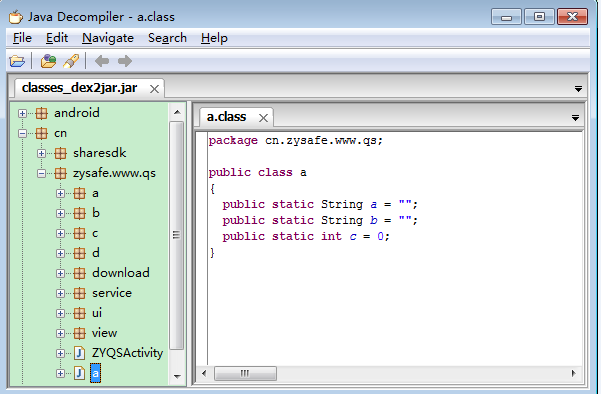当C++遇到IOS应用开发---LRUCache缓存
考虑到缓存实现多数使用单例模式,这里使用C++的模版方式设计了一个Singlton基类,这样以后只要继承该类,子类就会支持单例模式了。其代码如下:
[cpp]
//
// SingltonT.h
//
#ifndef SingltonT_h
#define SingltonT_h
#include <iostream>
#include <tr1/memory>
using namespace std;
using namespace std::tr1;
template <typename T>
class Singlton {
public:
static T* instance();
~Singlton() {
cout << "destruct singlton" << endl;
}
protected:
Singlton();
//private:
protected:
static std::tr1::shared_ptr<T> s_instance;
//Singlton();
};
template <typename T>
std::tr1::shared_ptr<T> Singlton<T>::s_instance;
template <typename T>
Singlton<T>::Singlton() {
cout << "construct singlton" << endl;
}
template <typename T>
T* Singlton<T>::instance() {
if (!s_instance.get())
s_instance.reset(new T);
return s_instance.get();
}
另外考虑到在多线程下对static单例对象进行操作,会出现并发访问同步的问题,所以这里使用了读写互斥锁来进行set(设置数据)的同步。如下:
[cpp]
#ifndef _RWLOCK_H_
#define _RWLOCK_H_
#define LOCK(q) while (__sync_lock_test_and_set(&(q)->lock,1)) {}
#define UNLOCK(q) __sync_lock_release(&(q)->lock);
struct rwlock {
int write;
int read;
};
static inline void
rwlock_init(struct rwlock *lock) {
lock->write = 0;
lock->read = 0;
}
static inline void
rwlock_rlock(struct rwlock *lock) {
for (;;) {//不断循环,直到对读计数器累加成功
while(lock->write) {
__sync_synchronize();
}
__sync_add_and_fetch(&lock->read,1);
if (lock->write) {//当已是写锁时,则去掉读锁记数器
__sync_sub_and_fetch(&lock->read,1);
} else {
break;
}
}
}
static inline void
rwlock_wlock(struct rwlock *lock) {
__sync_lock_test_and_set(&lock->write,1);
while(lock->read) {
//http://blog.itmem.com/?m=201204
//http://gcc.gnu.org/onlinedocs/gcc-4.6.2/gcc/Atomic-Builtins.html
__sync_synchronize();//很重要,如果去掉,g++ -O3 优化编译后的生成的程序会产生死锁
}
}
static inline void
rwlock_wunlock(struct rwlock *lock) {
__sync_lock_release(&lock->write);
}
static inline void
rwlock_runlock(struct rwlock *lock) {
__sync_sub_and_fetch(&lock->read,1);
}
这里并未使用pthread_mutex_t来设计锁,而是使用了__sync_fetch_and_add指令体系, 当然最终是否如上面链接中作者所说的比pthread_mutex_t性能要高7-8倍,我没测试过,感兴趣的朋友也可以帮助测试一下。
有了这两个类之后,我又补充了原文作者中所提到了KEY比较方法的定义,同时引入了id来支持object-c的对象缓存,最终代码修改如下:
[cpp]
#ifndef _MAP_LRU_CACHE_H_
#define _MAP_LRU_CACHE_H_
#include <string.h>
#include <iostream>
#include "rwlock.h"
#include <stdio.h>
#include <sys/malloc.h>
using namespace std;
namespace lru_cache {
static const int DEF_CAPACITY = 100000;//默认缓存记录数
typedef unsigned long long virtual_time;
typedef struct _HashKey
{
NSString* key;
}HashKey;
typedef struct _HashValue
{
id value_;
virtual_time access_;
}HashValue;
//仅针对HashKey比较器
template <class key_t>
struct hashkey_compare{
bool operator()(key_t x, key_t y) const{
return x < y;
}
};
template <>
struct hashkey_compare<HashKey>
{
bool operator()(HashKey __x, HashKey __y) const{
string x = [__x.key UTF8String];
string y = [__y.key UTF8String];
return x < y;
}
};
//自定义map类型
template <typename K, typename V, typename _Compare = hashkey_compare<K>,
typename _Alloc = std::allocator<std::pair<const K, V> > >
class lru_map: public map<K, V, _Compare, _Alloc>{};
class CLRUCache
{
public:
CLRUCache() : _now(0){
_lru_list = shared_ptr<lru_map<virtual_time, HashKey> >(new lru_map<virtual_time, HashKey>);
_hash_table = shared_ptr<lru_map<HashKey, HashValue> > (new lru_map<HashKey, HashValue>);
}
~CLRUCache(){
_lru_list->clear();
_hash_table->clear();
}
int set( const HashKey& key, const id &value )&nb
补充:移动开发 , IOS ,




